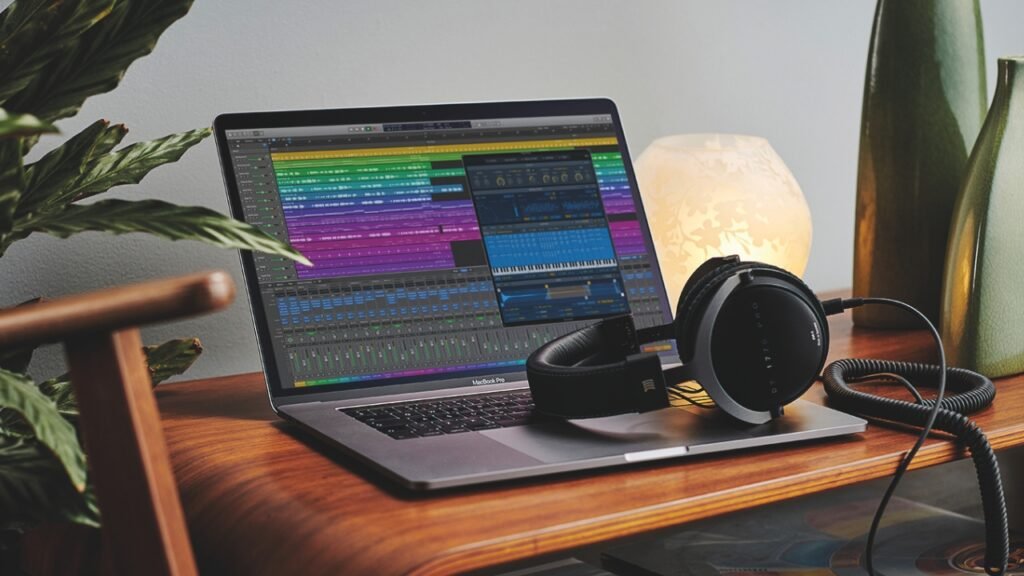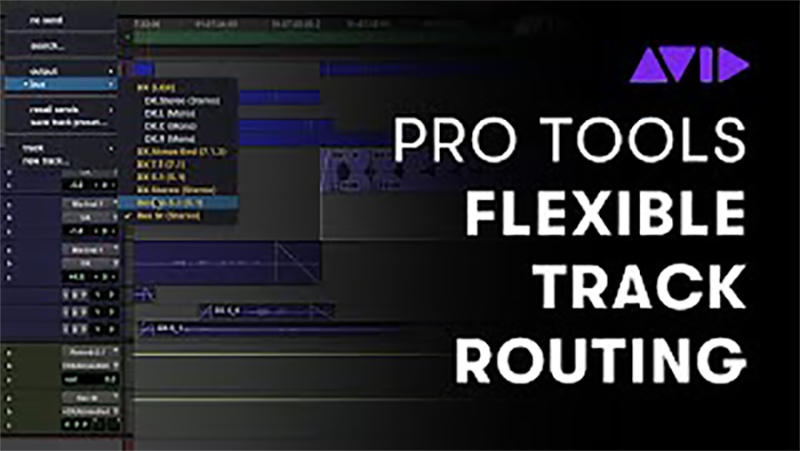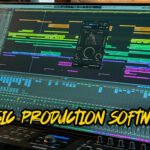Choosing the right music production software can be a daunting task, especially with so many options available. This guide will help you understand how to select the best music production software easily, focusing on key features, personal needs, and practical steps.
Understanding Music Production Software
Music production software, often called Digital Audio Workstations (DAWs), is essential for anyone looking to create music. DAWs allow you to record, edit, mix, and produce audio tracks. Some popular DAWs include:
- Ableton Live: Great for live performances and electronic music.
- FL Studio: Known for its user-friendly interface and beat-making capabilities.
- Logic Pro: A favorite among Mac users with a wide range of features.
- Pro Tools: Widely used in professional studios for recording and editing.
Why Choosing The Right Software Matters
The right music production software can make a significant difference in your creative process. It should match your skills, style, and the type of music you want to produce. A good DAW will help you work efficiently and bring your musical ideas to life.
Steps To Choose Music Production Software Easily
1. Identify Your Needs

Before diving into specific software options, think about what you want to achieve:
- Type of Music: Are you producing hip-hop beats, electronic dance music, or recording live instruments?
- Features Required: Do you need advanced editing tools, MIDI capabilities, or built-in virtual instruments?
2. Research Different DAWs
Take some time to explore various DAWs. Here are a few factors to consider:
- User Interface: Is it intuitive and easy to navigate?
- Built-in Features: Does it come with virtual instruments, effects, and sound libraries?
- Compatibility: Ensure the software works on your operating system (Windows or Mac).
3. Try Free Trials
Most DAWs offer free trials or basic versions. Download a few that interest you and experiment with them. This hands-on experience will help you understand which software feels comfortable and suits your workflow.
4. Watch Tutorials
YouTube is a great resource for tutorials on different DAWs. Watching these can give you insights into how each software works and whether it aligns with your needs.
When starting your journey in music production, understanding the functionality of different DAWs is crucial. YouTube hosts a vast array of tutorial videos that cover everything from basic setup to advanced techniques. For instance, you can find tutorials that explain how to navigate the software, utilize its features effectively, and even tips for achieving professional-sounding mixes
5. Consider Your Budget
Music production software can range from free to several hundred dollars. Determine how much you are willing to spend and look for options within that budget:
- Free Software: Programs like Audacity are great for beginners.
- Affordable Options: FL Studio offers various pricing tiers based on features.
6. Check System Requirements
Ensure your computer meets the system requirements for the software you are considering. Some DAWs require more processing power and memory than others.
7. Read Reviews
Look at user reviews and ratings online. This feedback can provide valuable insights into the strengths and weaknesses of each software option.
8. Join Online Communities
Engaging with other music producers in forums or social media groups can help you gather recommendations based on their experiences with different DAWs.
9. Think About Future Needs
Choose software that can grow with you as your skills improve. If you plan to expand your music production capabilities in the future, look for DAWs that offer advanced features.
10. Popular Music Production Software Options
Here’s a brief overview of some popular music production software:
| Software | Best For | Price Range |
|---|---|---|
| Ableton Live | Live performance & electronic | $99 – $749 |
| FL Studio | Beat making | $99 – $499 |
| Logic Pro | Mac users | $199 |
| Pro Tools | Professional studios | $29/month or $599 |
| Audacity | Free audio editing | Free |
Ableton Live

Ableton Live is a versatile music production software that excels in both live performances and studio work. Its unique Session View allows users to experiment easily with loops and samples, making it perfect for improvisation and creativity.
This feature enables musicians to mix different musical ideas without being restricted by a timeline, allowing for quick adjustments and real-time performance. Whether you are a beginner or a professional, Ableton Live provides the tools you need to bring your musical ideas to life.
FL Studio
FL Studio is popular among beat makers due to its simple interface and powerful piano roll feature that makes creating melodies easy. FL Studio is a popular music production software known for its user-friendly interface and powerful features.
It offers a wide range of tools for creating music, including over 100 instruments and effects, making it suitable for beginners and professionals alike. One of its standout features is the Piano Roll, which allows users to create melodies and patterns easily.
FL Studio also includes a Playlist where you can arrange your musical ideas into a complete song. Its flexible workflow lets you experiment with different sounds and arrangements quickly. Additionally, FL Studio supports various audio formats and allows for easy mixing and mastering of tracks. Whether you’re making beats or producing full songs, FL Studio provides everything you need to bring your musical ideas to life.
Logic Pro
Logic Pro is a comprehensive DAW that provides advanced features suitable for professional music production, including a vast library of sounds and plugins.
Logic Pro is a professional music production software designed for Mac users. It provides powerful tools for recording, editing, and mixing audio tracks. With Logic Pro, you can create and arrange music easily using features like Live Loops, which allows you to experiment with loops and samples in real-time.The software includes a wide range of virtual instruments and effects, making it suitable for various music styles. It also supports advanced MIDI editing, enabling precise control over your musical performances.
Logic Pro is known for its user-friendly interface and extensive sound library, making it a favorite among musicians and producers looking to create high-quality music. Whether you’re a beginner or an experienced professional, Logic Pro offers the features you need to bring your musical ideas to life.
Pro Tools

Pro Tools is a professional music production software developed by Avid Technology. It is widely used in recording studios for creating, editing, and mixing audio.
Pro Tools offers high-quality sound recording with support for up to 192 kHz audio resolution, making it ideal for capturing vocals and instruments. One of its key features is the ability to work with both audio and MIDI tracks, allowing users to compose music using virtual instruments.
The software provides powerful editing tools that enable precise manipulation of audio, making it easier to create polished tracks .Pro Tools also includes a large collection of plugins and effects to enhance your music, giving you access to various sounds and tools for mixing. Whether you’re a musician, producer, or sound engineer, Pro Tools offers the flexibility and capabilities needed to bring your musical ideas to life.
Audacity
Audacity is a free, open-source audio editor suitable for beginners who want to start recording without any financial commitment.
The software supports many audio formats, including MP3 and WAV, making it easy to import and export files. Audacity also offers features like noise reduction, pitch adjustment, and multi-track editing, allowing you to work on complex projects with multiple audio layers. Whether you’re creating music, making podcasts, or just experimenting with sound, Audacity provides the tools you need to produce high-quality audio.
Also Read : Music Producers: Crafting Sound in the Studio
Conclusion
Choosing the right music production software doesn’t have to be complicated. By understanding your needs, trying out different options, and utilizing available resources like tutorials and community feedback, you can find the perfect DAW for your musical journey. Remember that the best software is one that feels comfortable for you and helps bring your creative ideas to life. Start experimenting today, and enjoy making music!
FAQs:
1. What is music production software?
Music production software, also known as a Digital Audio Workstation (DAW), is a program that allows you to record, edit, mix, and produce music. Examples include Ableton Live, FL Studio, and Logic Pro.
2. How do I choose the right music production software?
To choose the right software, consider your music style, required features, budget, and whether you prefer a user-friendly interface. Trying free trials can also help you decide.
3. Are there free options for music production software?
Yes, there are free options available, such as Audacity and GarageBand (for Mac users). These can be great starting points for beginners.
4. What features should I look for in a DAW?
Look for features like MIDI support, audio recording capabilities, built-in instruments and effects, and an intuitive user interface that suits your workflow.
5. Can I use music production software on any computer?
Most DAWs have specific system requirements. Check if the software is compatible with your operating system (Windows or Mac) and ensure your computer meets the necessary specifications.
6. How much does music production software cost?
Prices vary widely. Some DAWs are free, while others can range from $99 to several hundred dollars. Determine your budget before making a choice.
7. Is it important to watch tutorials before choosing software?
Yes! Watching tutorials can help you understand how different DAWs work and whether they fit your needs and style.




